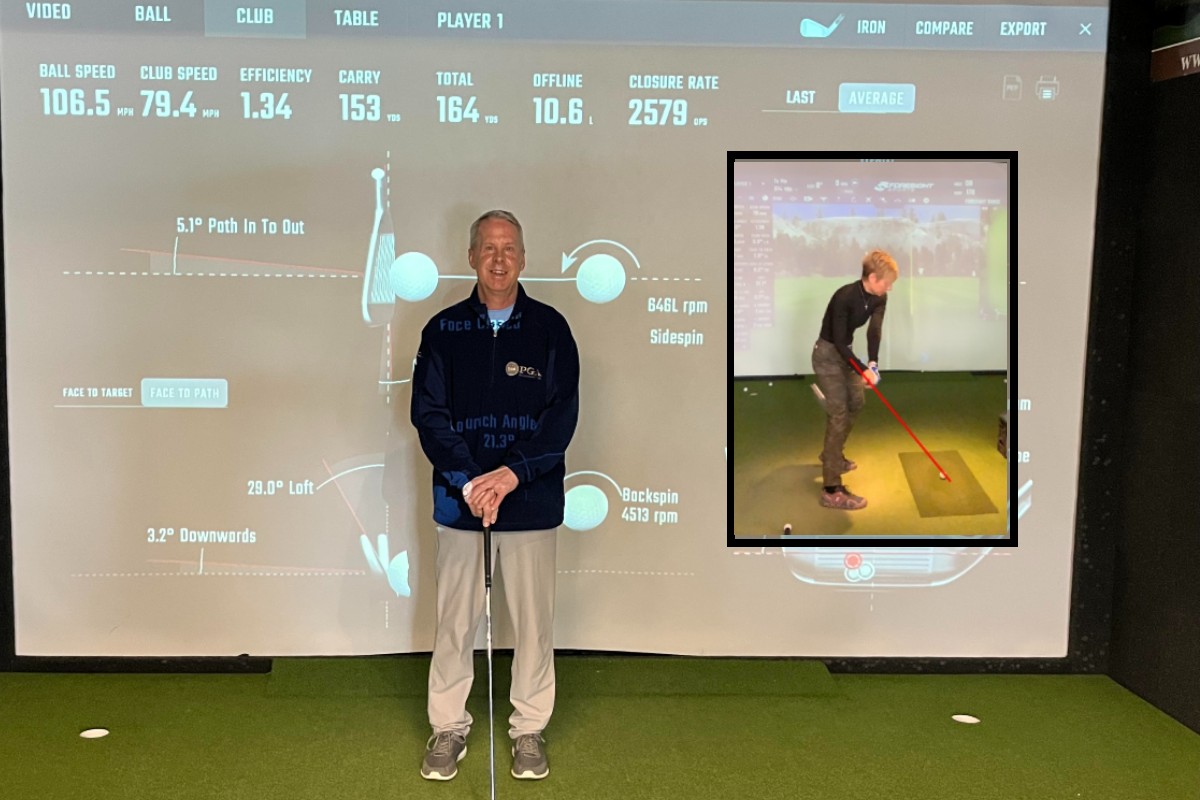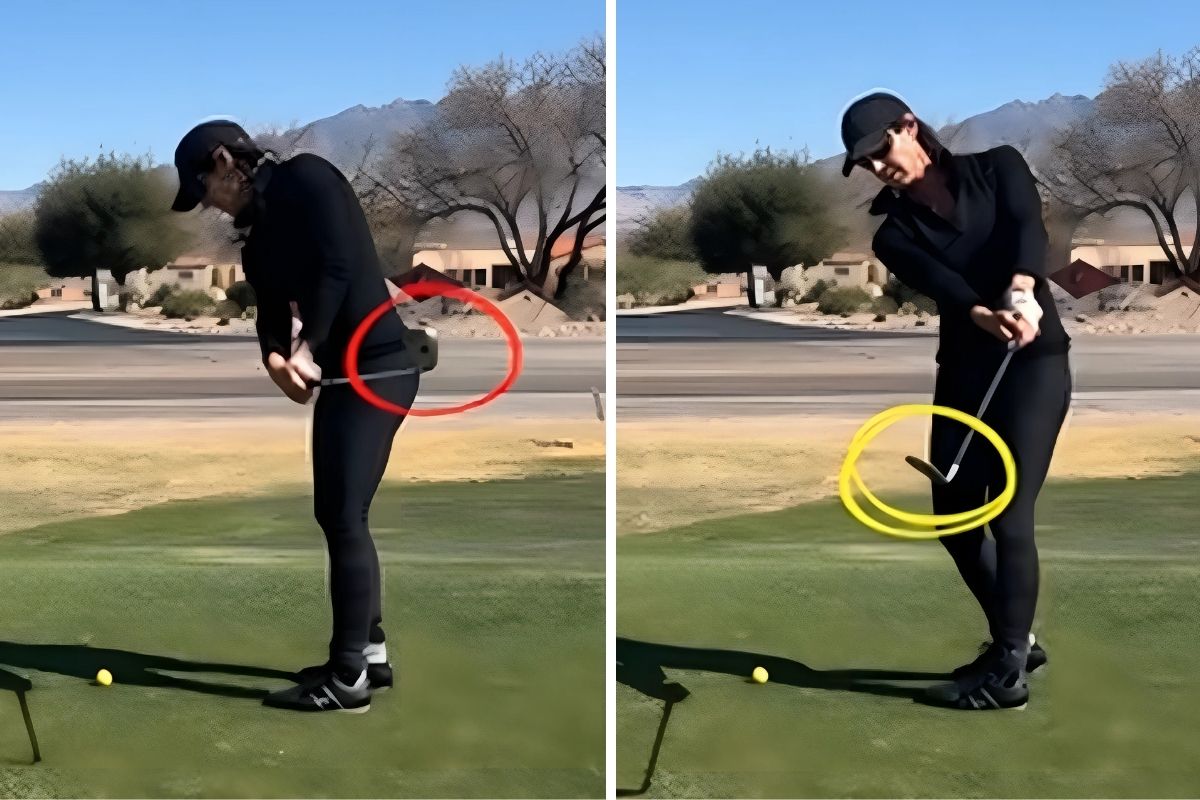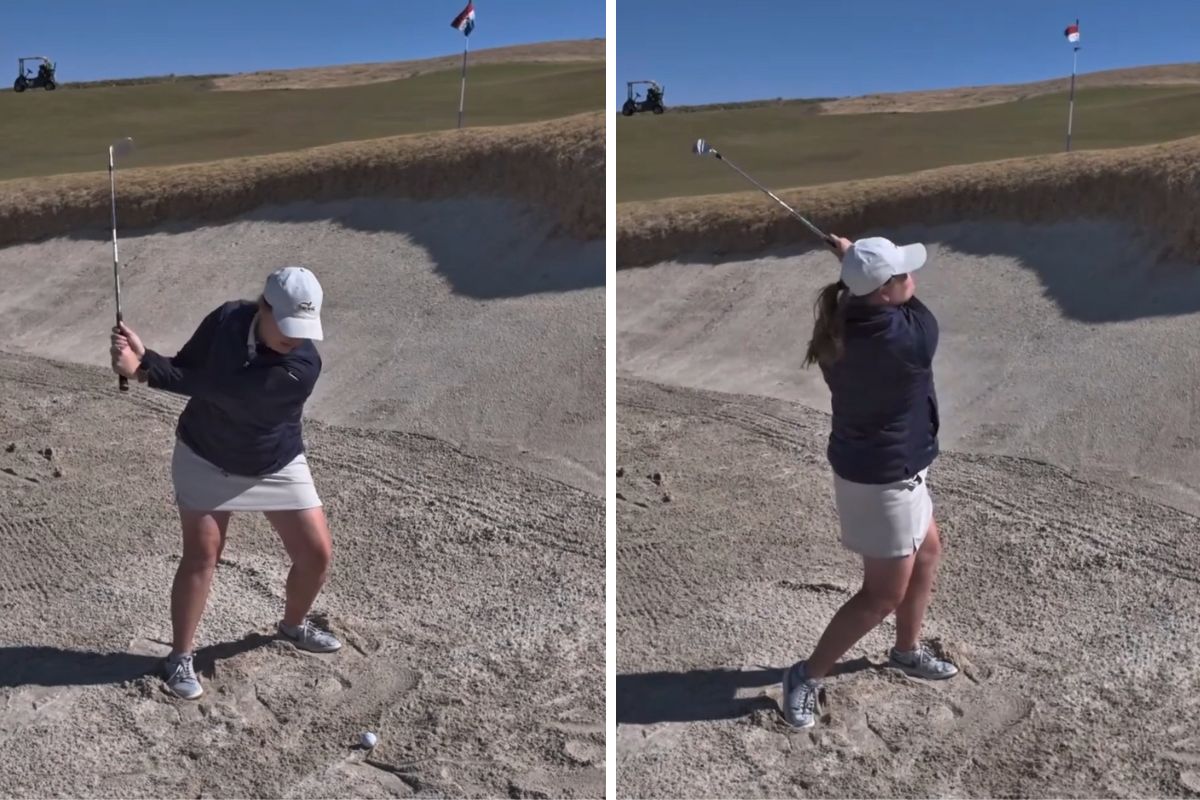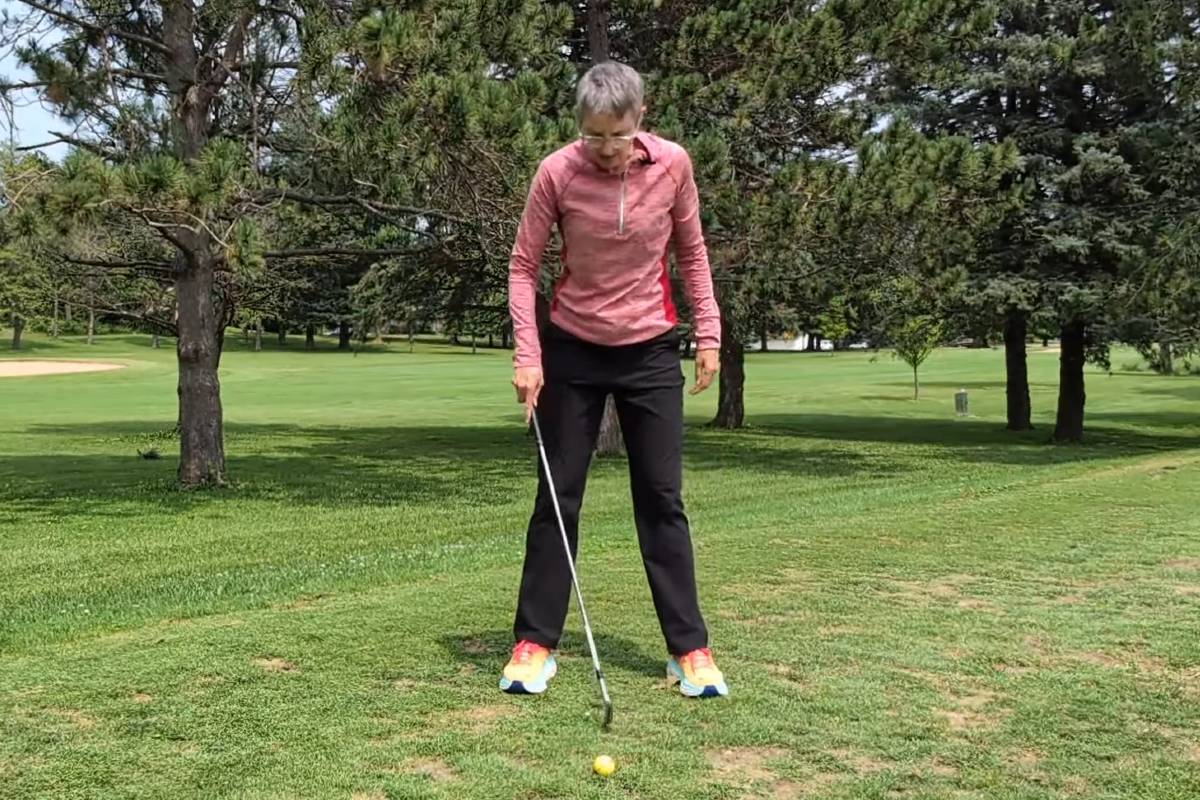If you live in a climate where the golf course is closed due to cold and snow, practicing at an indoor facility with a simulator and launch monitor can be very helpful to help you make progress with your golf game!
Tips for Using an Indoor Simulator
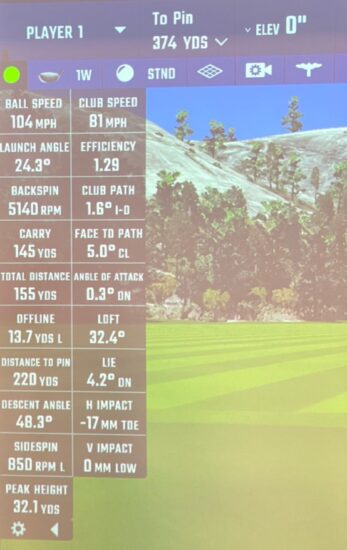
When arriving at an indoor simulator for the first time, I suggest starting with your 7 iron. You will be hitting off a mat and many people tend to “shy away” from the ground and lift up a bit to avoid hitting “the floor”. Remember, the mat is soft and has plenty of cushion, so be sure to take a few practice swings and “clip” the grass to experience the feel before you start hitting balls.
Most simulators have different kinds of tees that you can use. Hitting some 7-irons off a tee is a good way to start. Hit a few good ones and get comfortable before hitting from the ground!
The screen for the very accurate ForeSight GC Quad Launch monitor that I use for lessons at Petoskey Golf Center shows 19 different boxes of helpful information, but this can be overwhelming. This is especially true if you are just beginning to work on your swing indoors.
The good news is, by working on just two of the boxes: the Club Path and Face Path Direction (compared to the path) can get you on the road to recovery by working on hitting a draw shot (a right-handed shot that starts straight or starts a bit to the right then curves a bit left with over spin and roll!) On the picture above, these two boxes are the 3rd and 4th boxes down from the top in the right column.
Here’s an example for you showing Suzanne who works with me and is a typical golfer building a good swing with a nice set up, takeaway and backswing but needs to work on her downswing as a result of an outside-to-in swing path and the (slice causing) open club face that often goes along with that path.
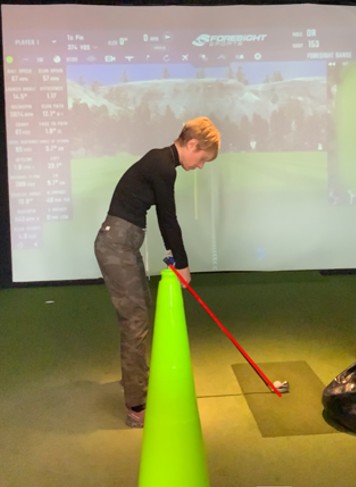
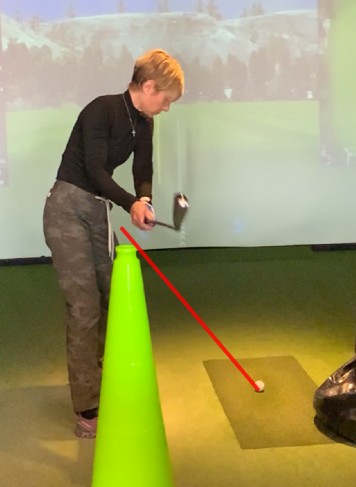
Here Suzanne is doing a good job in the takeaway, keeping the club head outside the hands up the red shaft angle plane on the far side! I like to measure this when the shaft is parallel with the ground on the takeaway.
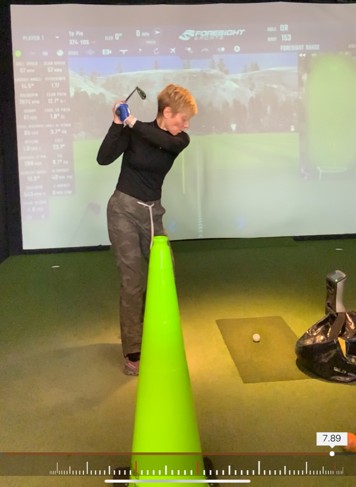
Here Suzanne has done a nice job pulling her hands back behind her head for great “Depth”. This puts her in a good position to get a powerful inside attack, which would have the club face attack from her side of the cone, just under the red shaft angle plane when the shaft is parallel with the ground on the way down.
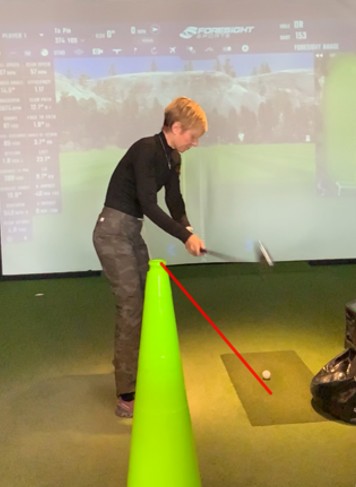
Suzanne is swinging outside-in and coming in ‘over the top’ in the downswing! This also usually means that the ball is hit with the open clubface double whammy, a steep swing the often starts left and then slices back to the right. If the club face is open a lot, the ball will start right and then slice further to the right.
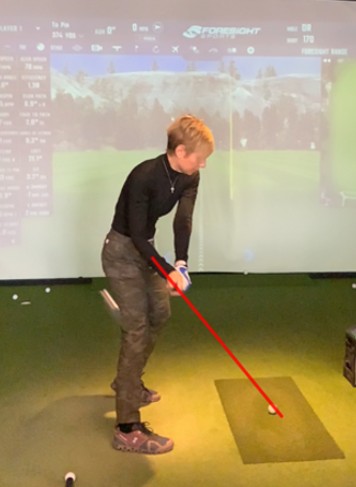
Suzanne making the correction!
Here Suzanne is attacking on the downswing from the inside, or under the shaft angle plane. The feeling is swinging a bit to the right. ‘Swinging to right field or 1:00 pm are good swing thoughts to help to achieve this powerful Inside Attack!
Think Knuckles Down
To train Suzanne’s hand release, we have her think “Knuckles Down” on her left hand at impact as she “feels” like she is definitely going to start the ball to the right of the target line with a closed club face. Once the ball hooks left too much time after time, her hands will be trained and she won’t need the knuckles down swing thought.
Reading The Club Path on the Launch Monitor
Look for the numbers to read I-O or “Inside Out” below 10 degrees at first. Then with practice, try to swing only slightly out to the right side of green or 3 to 7 degrees inside out. You want to avoid swinging over the top in an outside-in swipe which will show up as O-I (Outside-In).
Reading Face to Club Path on the Launch Monitor
Look for the numbers to say Closed (Not Open). A good goal is for the club face to be closed half the amount of degrees compared to Club Path. For example: if the Club Path is 6 degrees inside out, the goal is to get those knuckles “feeling” down on the left hand at impact to make the face closed 3 degrees. (Club face compared to Club Path) This ball would typically start toward the right part of the green and then curve left toward the center or left side of the green with overspin roll for more distance.
Starting a ball to the right of center and releasing the hands to make it curve back toward the center is a draw shot, the longest ball most amateurs can hit! If it curves too much left after a nice inside attack, weaken the grip by rotating hands on the grip slightly left, and/or quit trying to get the left hand knuckles down at impact because your hands are already releasing too well. The Knuckles Down Drill is a temporary drill you use until the ball curves too far left!

